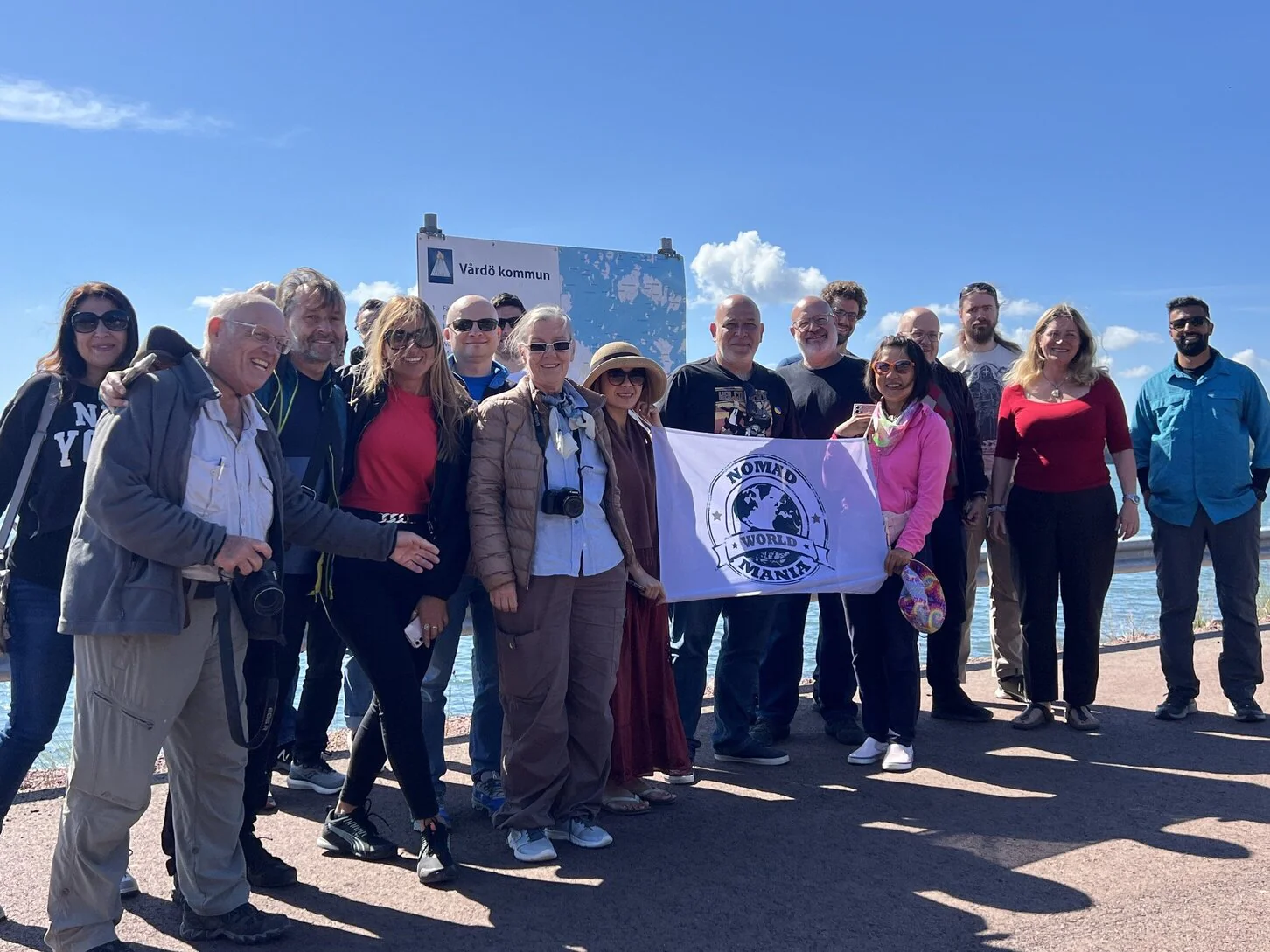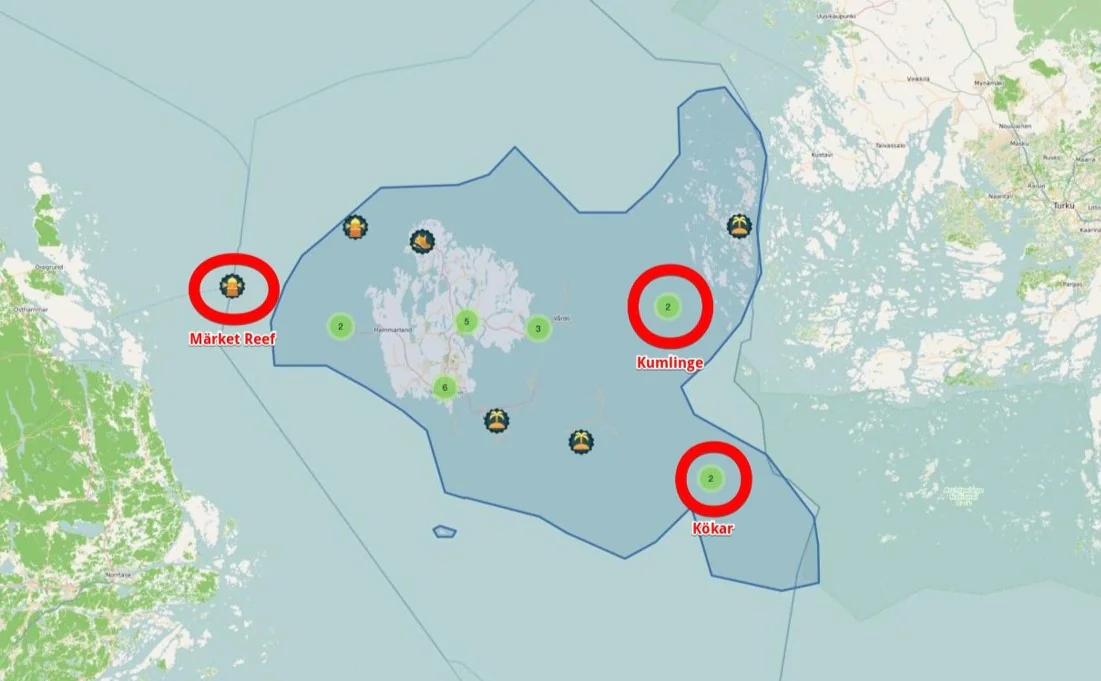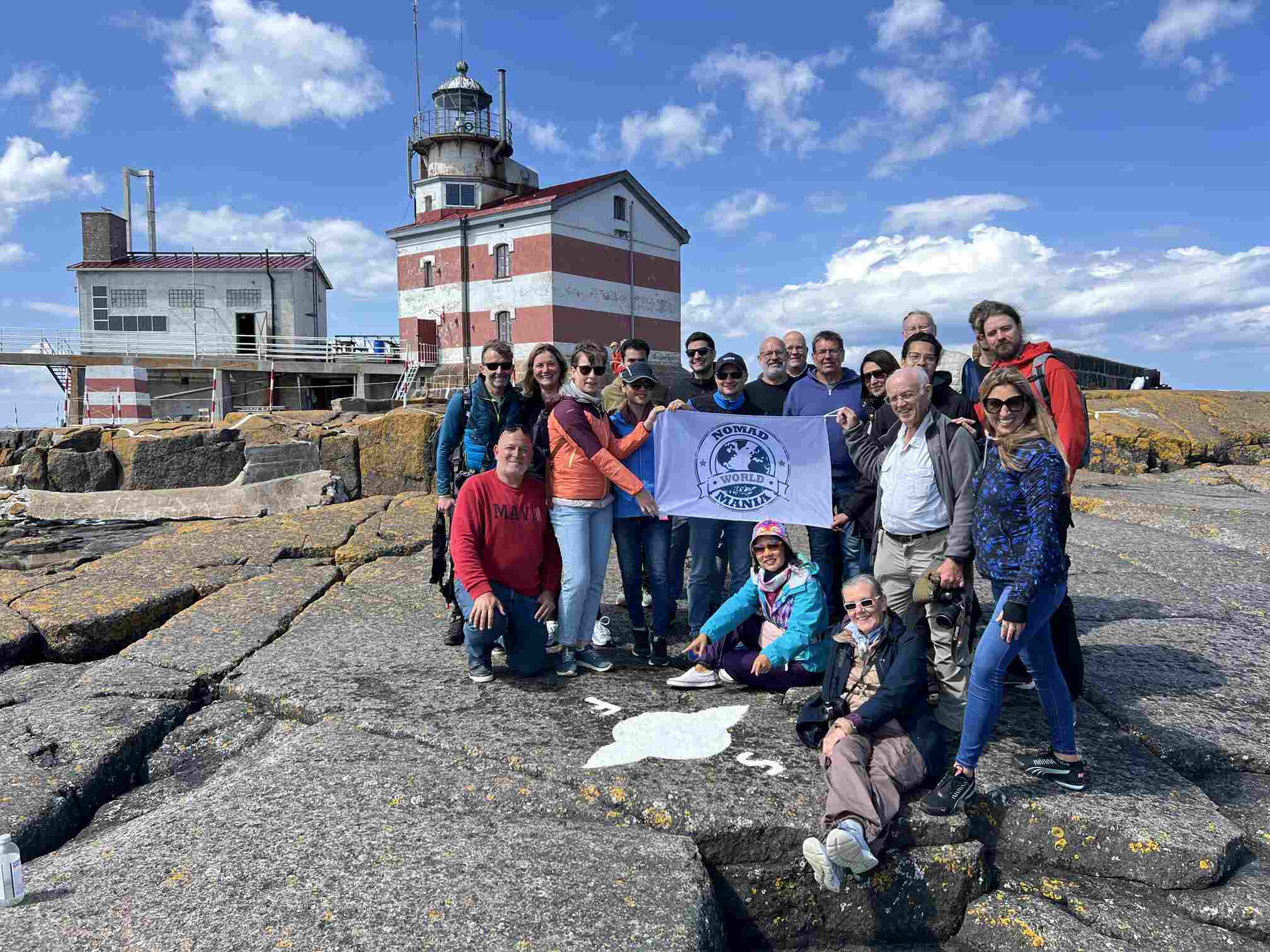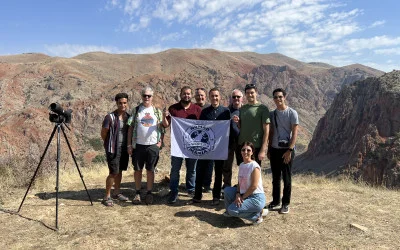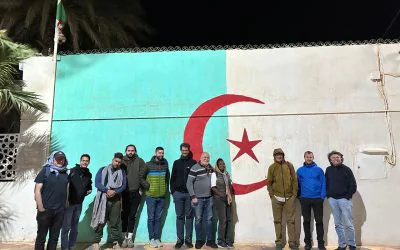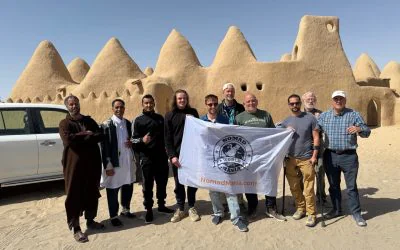The NomadMania trip to the Åland islands was held between June 5 and 9, 2024 and was a fantastic occasion for 20 people in our community to meet each other and enjoy a little visited but thoroughly adorable destination. The Åland islands are an autonomous region of Finland ever since 1920; their main language is Swedish, and even though the citizens officially hold a Finnish passport, Finnish is almost nowhere to be seen. The islands have their own government and parliament and are essentially independent in terms of their internal affairs.
Märket Reef
With most of the group arriving late on the ship from Stockholm, it wasn’t until early on the morning of June 6 that everyone assembled. And the news couldn’t have been better – the weather was perfect for their endeavour of heading to Märket Reef, the world’s smallest divided island (if one can call it an island), which is split between Finland and Sweden.
A very quirky NomadMania DARE place, it is extremely weather dependent, with gale force winds often making an approach and landing impossible. But this was not the case on June 6, when the group headed to Eckerö on the western coast of the main island of the archipelago to board on two pre-booked small boats that breezed through the calm seas, with the ‘holy grail’ of Märket in sight after about 45 minutes.
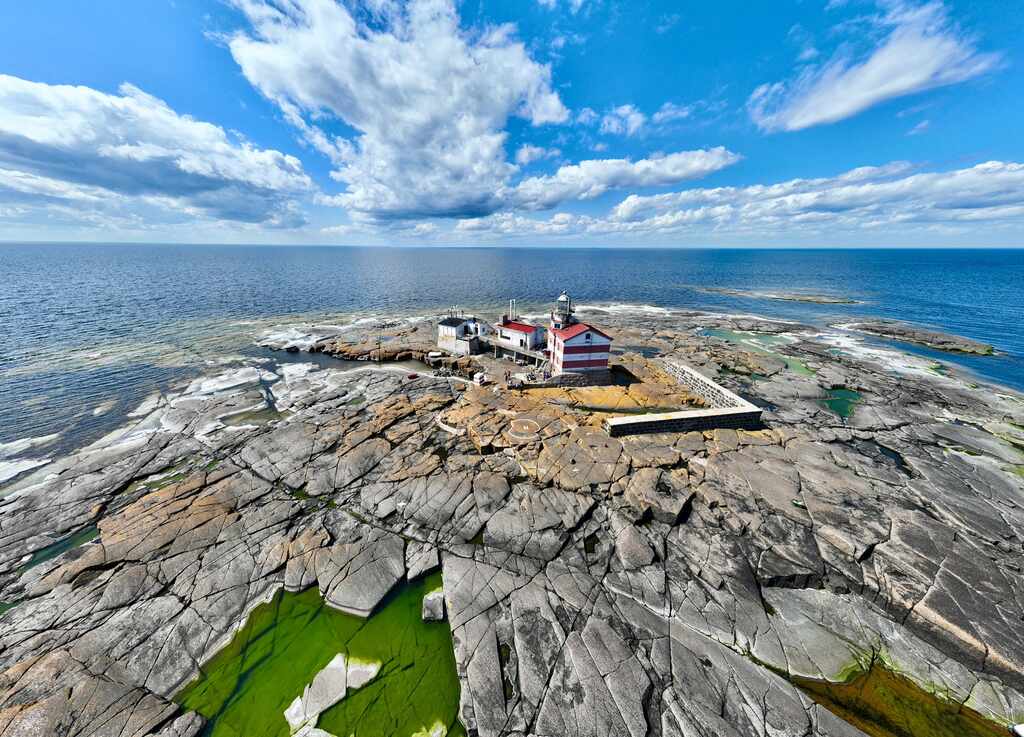
Märket Reef, photo by Harris Legome
On the islet itself, the group were welcomed by a few extremely friendly volunteers from the Lighthouse Preservation Society of Finland. They gave a very informative tour about the history of the place, which back in the day was the westernmost point of the Russian Empire until Finland and the Åland islands gained their independence in 1917.
The lighthouse has had a tumultuous history and fell into disrepair before the efforts of the society to restore it and maintain it; during the summer, volunteers come on rotation for a week and this seems to be an extremely prestigious posting for the willing young people.
Their welcome extended to sandwiches and a home-made cake, so what more could one wish for? Some headed up the staircase to get a panoramic view from above, while others had fun with feet on either side of the border, which is largely imaginary. Nevertheless, the actual borderline was changed to accommodate the lighthouse, which belongs to Finland. The result is one of the strangest borders in the world, though one can doubt there is much significance to it.
On the Main Island
Back on terra firma on the main island, the group visited the main old customs house of the Russian Empire which now houses a museum. In the capital Mariehamn there is a protest at 5 pm every day in front of the Russian Consulate, and this became a very worthy meeting with the vocal locals, most of an advanced age, who were waving Ukrainian flags and chanted the Ukrainian National Anthem. They were most surprised that such an international group, comprised of not only the expected Finns, Swedes and perhaps Germans but even a Kuwaiti, was present on their island.
With the most difficult DARE place achieved, the remaining programme seemed easier, though to accommodate the group of 20, four vehicles had to be arranged. Luckily our host and avid Swedish traveller Mikael Staffas ensured that everything was organised perfectly. June 7 started with an early visit to the castle in Kastelholm, followed by the ruins of the former Russian fort at Bomarsund, which was destroyed by British and French forces in a rare collaboration back in 1854. Following this, the Åland islands were demilitarized and this is the regime that remains to this day.
Next was the ferry to Kumlinge, which is another DARE place as it is one of the least visited municipalities of the archipelago. On the islands, the tour involved an unexpectedly beautiful church with frescos from many centuries ago and gravestones that are testament to the long history of the place. This was followed by a boat ride to what is another small island where Glada Laxen restaurant came up with an unexpectedly great lunch. A climb on a tower made for more panoramic views of the blue of the sea and sky and the green of the many trees in this pristine environment.

Åland – Kumlinge church
Kökar Archipelago
The last full day of the trip took in the more distant Kökar archipelago, yet another DARE place. To get there, the ferry takes almost 3 hours and this was the chance for a legendary NomadMania quiz on the ferry which resulted in a win for the team composed of Lucy, Ferdi, Youssef and Philippe. While most teams could guess the number of NomadMania regions of Finland, nobody guessed correctly how many of the group present had been nominated for a NomadMania Award in the past – the correct number was 6!
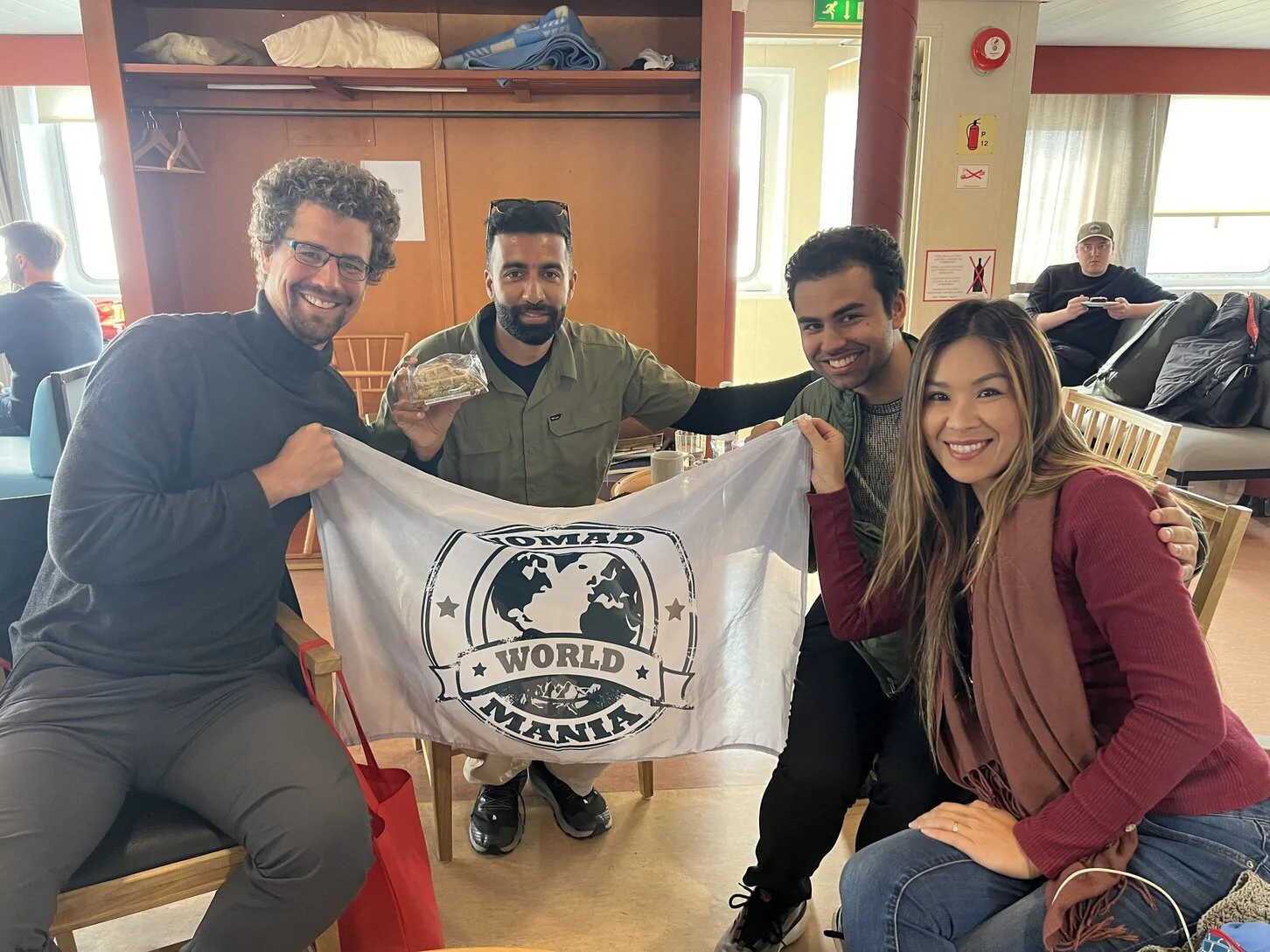
Åland on the ferry – winning team
Kökar also features a beautiful church, though less ornate than the one in Kumlinge, but the highlight here is the local open-air museum which is clearly a labour of love of the tightly-knit local community. Apart from the main house with exhibits which vividly bring to life the history and past of the islands, there were many other wooden buildings in the ample space with boats and maritime themes, tractors and a recreation of a log cabin the way it would have been in the past.
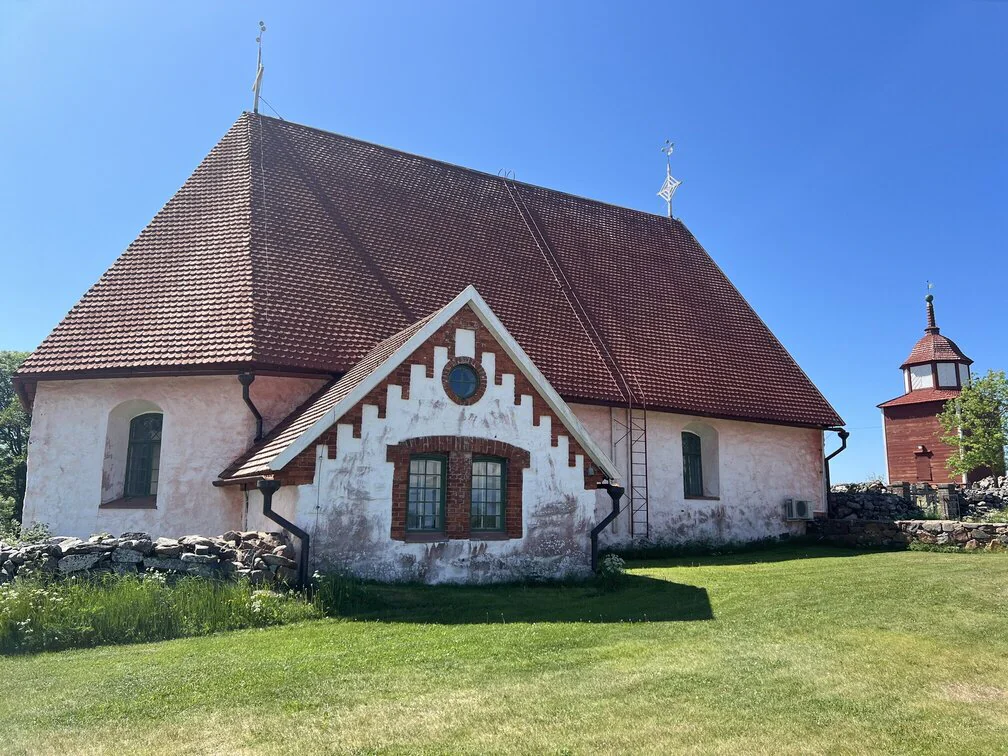
Åland – church in Kökar
But perhaps one of the most significant moments of the whole event was over lunch, when the Speaker of the Åland Parliament talked to the group and explained a lot about the political system, the relationship with Finland and the current push to open the islands up to the world and transform them. Apparently in the past decade or so the population has increased by 30% to 30,000 people, representing almost 100 different nationalities. This is proof of the islands’ openness and welcoming atmosphere which everyone in the group sensed deeply.
Back to the Main Island
The last day of a trip is always sad and in the morning the group took in the most famous of the sights, the Pommern sailing ship, which back in the 1920s headed many times to Australia carrying grain from England. The museum ship recounts the journey in what is a very good reconstruction of a time long gone. The adjacent Maritime Museum documents the industry to which this archipelago owes much of its past livelihood.
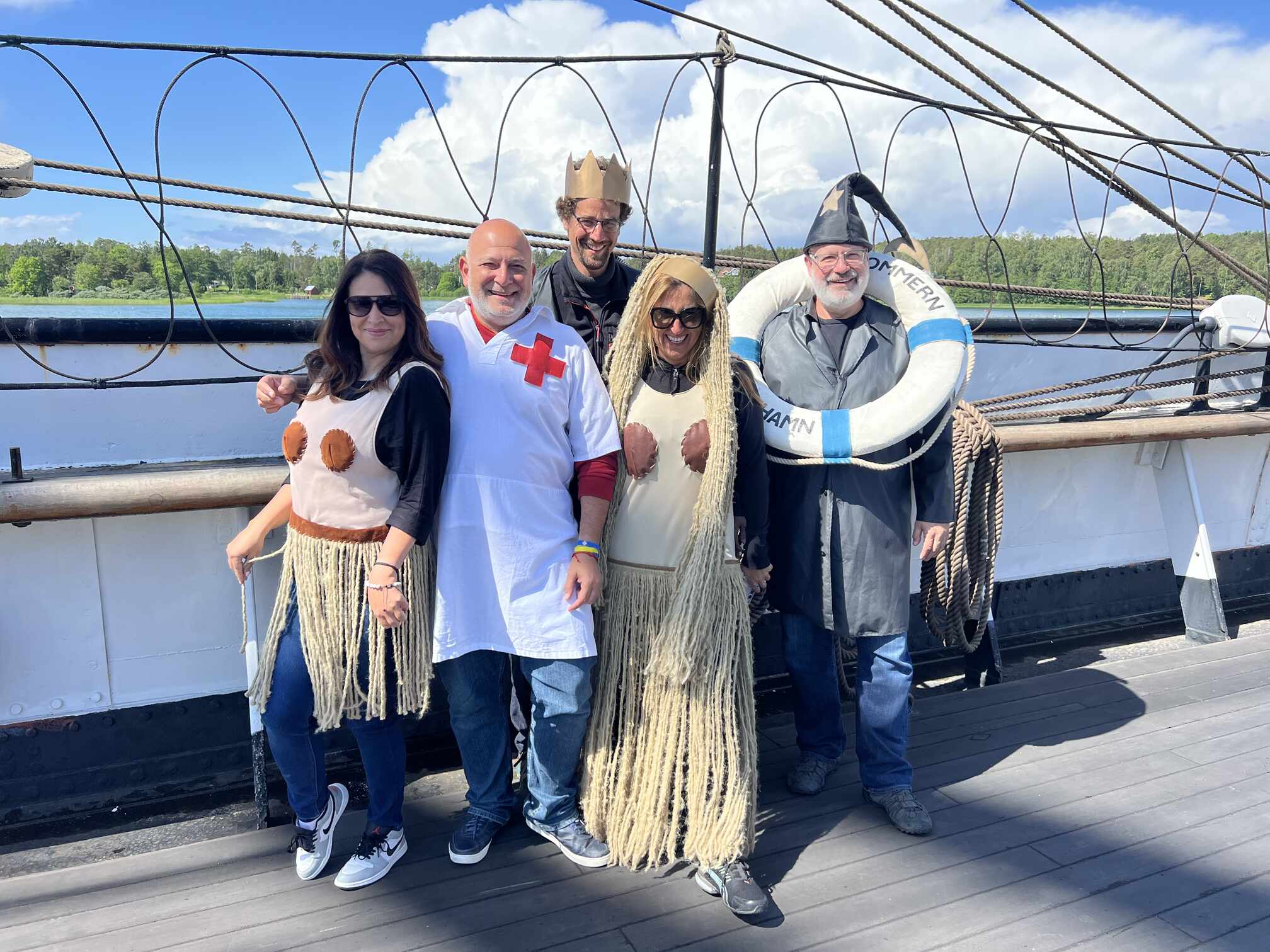
On the Pommern being silly 🙂
For the few who stayed on after the ship to Stockholm left, there were nice surprises. A visit to a classic car museum, replete with a jukebox and a bar area, and then finally an invitation to visit the Parliament as coincidence would have it that June 9 is Åland islands day. In the parliament, at least one local lamented that the Åland were under Finnish occupation.

Åland parliament
A chorus sang, the anthem was heard and scholarships were given to promising students. In a world that seems increasingly fragmented, it is heartening to see a small place with a strong identity welcoming everyone to its celebration of self-government and its tradition of democracy.
